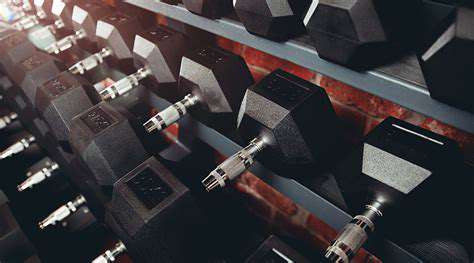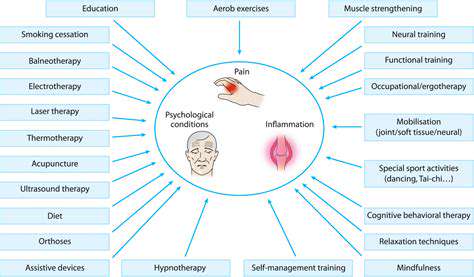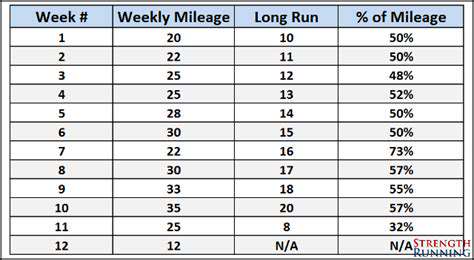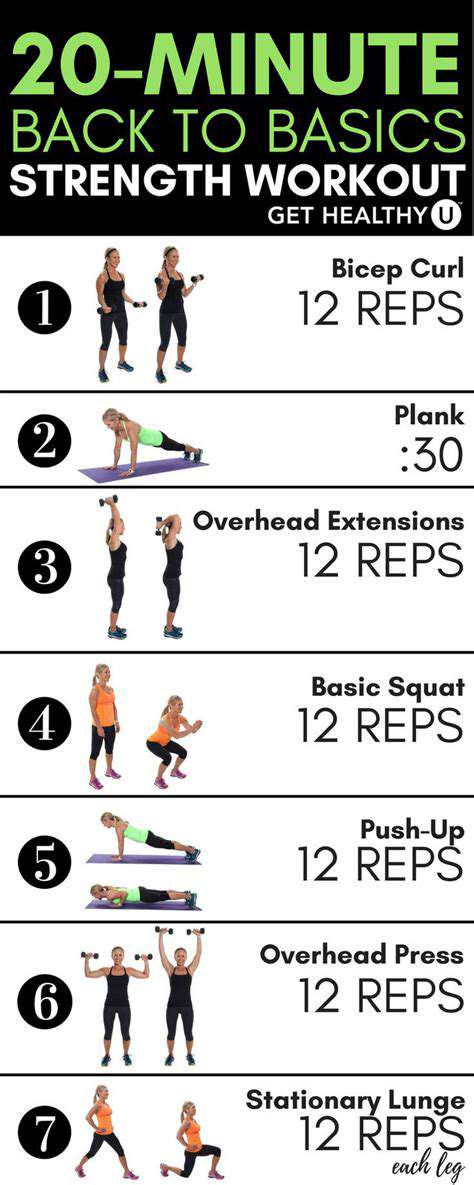How to Build Muscle Without a Gym [Beginner Guide]

Understanding Progressive Overload
Progressive overload is a fundamental principle in strength training, meaning that you gradually increase the demands placed on your muscles over time. This gradual increase in stress is essential for muscle growth and strength gains. Without it, your body adapts to the existing workload and progress plateaus. This principle applies to all types of exercise, whether it's lifting weights, running, or swimming.
The key to progressive overload lies in consistently challenging your muscles beyond their current capacity. This can be achieved through increasing the weight lifted, the number of repetitions performed, the sets completed, the intensity of the exercise, or the duration of the workout. It's crucial to listen to your body and adjust the intensity appropriately to avoid injuries.
Implementing Progressive Overload Strategies
There are various ways to implement progressive overload in your training routine. One common method is to increase the weight you lift by a small percentage each workout. For example, if you can currently bench press 100 pounds for 8 repetitions, gradually increase the weight to 102.5 pounds for the same reps. Another strategy involves increasing the number of sets or repetitions you perform for a specific exercise.
Progressive overload is not just about lifting heavier weights; it also involves other factors like increasing the intensity of the workout. For example, you might increase the speed of your running or swimming, or you might incorporate more challenging variations of exercises. This approach ensures your body is constantly adapting and pushing its limits. It's important to focus on proper form and technique to prevent injuries while challenging your limits.
Monitoring Progress and Adjusting Accordingly
Monitoring your progress is vital for successful progressive overload. Tracking your weight lifted, repetitions, sets, and exercise intensity allows you to assess your progress and identify areas where you need to adjust your training plan. By paying close attention to your body's signals, you can identify potential issues early on and make necessary modifications to your workout routine.
Regularly assessing your progress is crucial to ensure you're making consistent gains while avoiding overtraining. If you're not seeing the desired results, you might need to adjust the rate of increase in your training intensity. Conversely, if you're experiencing significant improvements, you can increase the challenge by further adjusting the intensity or the volume of your workouts.
Nutrition and Recovery: Fueling Your Gains

Nutrition for Optimal Recovery
Proper nutrition plays a crucial role in the recovery process after exercise or physical activity. Consuming a balanced diet rich in essential nutrients helps repair muscle tissue, replenish energy stores, and reduce inflammation. This includes adequate protein intake to support muscle growth and repair, as well as carbohydrates to replenish glycogen stores. Furthermore, incorporating healthy fats into your diet provides vital nutrients for hormone production and overall health, which are essential for the body's recovery processes.
Hydration is also paramount. Dehydration can significantly hinder the recovery process, impairing muscle function and increasing the risk of injury. Drinking plenty of water throughout the day, especially before, during, and after exercise, is vital for optimal hydration and recovery. Electrolyte drinks can also be beneficial, particularly after strenuous workouts, to replenish electrolytes lost through sweat.
Importance of Macronutrients
Macronutrients, such as carbohydrates, proteins, and fats, are essential for fueling the body and supporting recovery. Carbohydrates provide the body with the energy it needs to perform physical activity, and replenishing glycogen stores is crucial for optimal performance in subsequent workouts. Proteins are vital for muscle repair and growth, and consuming adequate protein after exercise helps to rebuild and strengthen muscle tissue. A balanced intake of healthy fats is also essential, contributing to hormone production and overall health, which plays a crucial role in the recovery process.
Specific macronutrient needs vary based on individual factors, including activity level, body type, and goals. Consulting a registered dietitian or nutritionist can help tailor a nutrition plan that meets your specific needs and promotes optimal recovery.
Recovery Strategies Beyond Nutrition
While nutrition is crucial for recovery, it's not the only factor to consider. Adequate sleep is essential for allowing the body to repair and rebuild tissues. Aim for 7-9 hours of quality sleep each night to optimize your body's natural recovery process. Furthermore, incorporating active recovery strategies, such as light stretching or low-intensity exercise, can promote blood flow, reduce muscle soreness, and improve overall recovery time. This will contribute to improved performance and reduce the risk of injury.
Stress management is another important aspect of recovery. Chronic stress can negatively impact the body's ability to recover. Implementing stress-reducing techniques, such as meditation or yoga, can positively influence the recovery process and overall well-being. By prioritizing both physical and mental well-being, you can significantly enhance your body's ability to recover and perform at its best.
Read more about How to Build Muscle Without a Gym [Beginner Guide]
Hot Recommendations
-
*Guide to Managing Gout Through Diet
-
*Best Habits for Financial Well being
-
*How to Build a Routine for Better Mental Health
-
*How to Eat Healthy on a Budget [Tips & Meal Ideas]
-
*Guide to Practicing Self Acceptance
-
*How to Incorporate More Movement Into Your Day
-
*Guide to Managing Chronic Pain Naturally
-
*Guide to Building a Reading Habit for Well being
-
*Top 5 Weight Loss Supplements That Actually Work
-
*Best Exercises for Postpartum Recovery [Beyond Abdominal Work]











